Direct cut recording
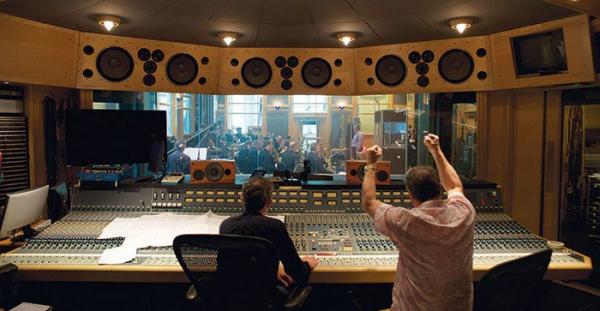
It’s 9:30am, 28 June 2016, Air Studios, London and Studio 1 is buzzing with anticipation for what could be an epic new direct cut recording for Mike Valentine’s specialist record label Chasing The Dragon.
 For those of you less familiar with a direct cut recording, the sound captured in the studio briefly passes through the mixing desk up to a cutting lathe that captures the performance live. The whole side of the record is cut in real time. No second takes, no extra pause between tracks. If an artist forgets a line or a sax player stumbles in their phrasing, then you need to start the whole side again. This is nerve wracking for artists, but the audio upside is Mike seems able to capture far more of the electricity of the performance, more of the dynamism of instruments with far greater musical communication. Last year I witnessed visitors to the National Audio Show spontaneously break into applause after he demoed his latest direct cut recording of the Syd Lawrence Orchestra (SLO) playing big band numbers. It was as though they were in the same room as the performers and wanted to show their appreciation.
For those of you less familiar with a direct cut recording, the sound captured in the studio briefly passes through the mixing desk up to a cutting lathe that captures the performance live. The whole side of the record is cut in real time. No second takes, no extra pause between tracks. If an artist forgets a line or a sax player stumbles in their phrasing, then you need to start the whole side again. This is nerve wracking for artists, but the audio upside is Mike seems able to capture far more of the electricity of the performance, more of the dynamism of instruments with far greater musical communication. Last year I witnessed visitors to the National Audio Show spontaneously break into applause after he demoed his latest direct cut recording of the Syd Lawrence Orchestra (SLO) playing big band numbers. It was as though they were in the same room as the performers and wanted to show their appreciation.
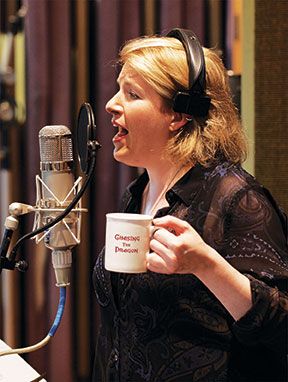 This Syd Lawrence Orchestra record came to the attention of talented singer and broadcaster Clare Teal, who invited Mike Valentine and SLO band leader Chris Dean on to her Radio 2 show to talk about this unique approach and any future plans. Clare mentioned she’d long wanted to record some classic Ella Fitzgerald numbers and soon the magical possibility of her singing with the SLO became a reality.
This Syd Lawrence Orchestra record came to the attention of talented singer and broadcaster Clare Teal, who invited Mike Valentine and SLO band leader Chris Dean on to her Radio 2 show to talk about this unique approach and any future plans. Clare mentioned she’d long wanted to record some classic Ella Fitzgerald numbers and soon the magical possibility of her singing with the SLO became a reality.
Most recordings capture each element of the performance separately, such as vocals or drums, and then bring these parts together in the mix. This can be ideal to get each instrument or performance sounding great, but sometimes a spark is lost. The sizeable recording spaces at Air Studios enables larger orchestras to have the room that they require, and for a lead singer to perform in the same space, as they would have done back in Ella’s heyday. This approach preserves more of the communication between the band and vocalist and when done well can ensure that the recording just feels more musical.
Listening in and grabbing some photos during rehearsals is really interesting. When a band like the SLO fires up, it’s seriously dynamic. Louder sections of Ding Dong The Witch Is Dead can leave your ears ringing. Similarly Clare’s exquisite vocals go from whisper quiet to full power in the space of a semi-quaver. Miking up such a performance is an art. The band is captured by no less than 21 microphones arranged to Mike’s and the studio’s secret recipe while Clare stands behind an acoustic screen with her preferred Neumann U47 valve-powered microphone. Talking with her, she has an encyclopedic knowledge of different microphones, easily an equal of my own on hi-fi.
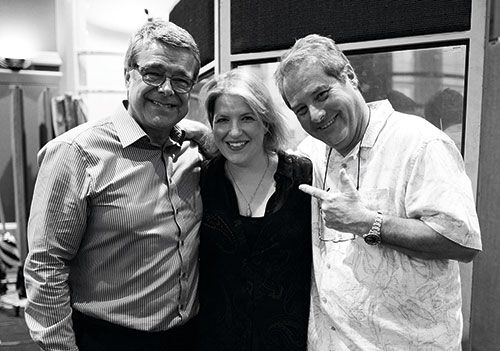 The other remarkable thing is being close up with professional musicians at work. Band leader Chris simply describes a tiny tweak to a trombone motif or a subtle shift in lilt to the drummer and the next bars have these alterations in place. Equally, Clare experiments with some alternative intonations on specific phrases until Rupert Coulson, the sound engineer behind the legendary Neve mixing desk confirms everything sounds spot on. This attention to detail is vital today because recording two entire LP sides perfectly is going to take everyone’s maximum professionalism.
The other remarkable thing is being close up with professional musicians at work. Band leader Chris simply describes a tiny tweak to a trombone motif or a subtle shift in lilt to the drummer and the next bars have these alterations in place. Equally, Clare experiments with some alternative intonations on specific phrases until Rupert Coulson, the sound engineer behind the legendary Neve mixing desk confirms everything sounds spot on. This attention to detail is vital today because recording two entire LP sides perfectly is going to take everyone’s maximum professionalism.
Meanwhile, up two flights of stairs John Webber, the cutting engineer is perched motionless over the Neumann VMS 80 cutting lathe, meticulously studying the groove being cut on a test lacquer through a microscope. He’s a cool character because this is potentially the most vital job today. John explains 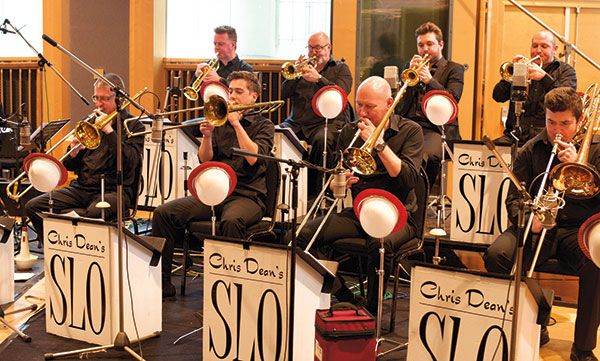 that he has to use the full side of vinyl to maximum advantage. Cut the groove too meanly, with ridges too close together, and there’s a risk that large dynamics will break through from one ridge to the next, with plenty of spare vinyl left uncut at the centre of the record. Spread the groove more leisurely and dynamics may be kept pristine, but he could run out of vinyl to cut before the last song on the side has finished. Making careful note of all rehearsal song lengths John signals he’s happy to do the first take.
that he has to use the full side of vinyl to maximum advantage. Cut the groove too meanly, with ridges too close together, and there’s a risk that large dynamics will break through from one ridge to the next, with plenty of spare vinyl left uncut at the centre of the record. Spread the groove more leisurely and dynamics may be kept pristine, but he could run out of vinyl to cut before the last song on the side has finished. Making careful note of all rehearsal song lengths John signals he’s happy to do the first take.
A hush comes over Studio One and everyone waits silently for the recording light to come on. The ancient red bulb illuminates and Mike Valentine sets half-inch analogue master tapes rolling at 30in per second and starts a Nagra digital 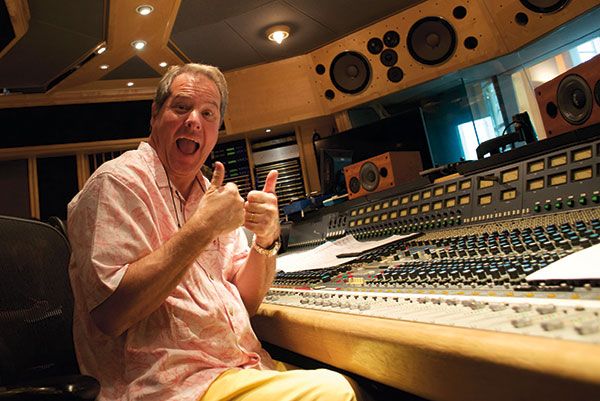 recorder sampling at 24-bit/192kHz. Chris Dean strokes out the time signature and the opening bars of I’ve Got You Under My Skin starts perfectly. This faultless track is followed by glorious arrangements of Begin The Beguine, I Get A Kick Out Of You and Ding Dong The Witch Is Dead. The ambient reverberations of the last bar fades and one side of an LP could be complete.
recorder sampling at 24-bit/192kHz. Chris Dean strokes out the time signature and the opening bars of I’ve Got You Under My Skin starts perfectly. This faultless track is followed by glorious arrangements of Begin The Beguine, I Get A Kick Out Of You and Ding Dong The Witch Is Dead. The ambient reverberations of the last bar fades and one side of an LP could be complete.
The tape is rewound and many of the band members come in to the mixing suite alongside Clare to listen back to their performance. Tape playback sounds dynamic and sublime. John signals from the cutting room that one extra dynamic section is pushing the boundary of the groove, but it should be OK. Chris, Clare and Mike have an upbeat conversation as they’re obviously itching to give the side another go. It already sounds truly excellent, but each of them thinks there’s more to give and more to capture on vinyl. Everyone re-takes their places and John sets up a new pristine lacquer ready for a fresh cut. Tapes roll, the lathe cutting head is lowered and the red light signals the band to fire up once more. If it was a great take before, this one has extra jump factor as Mike puts it. The performers feel confident they have a great recording in the bank, so with a little less anxiety they play with even greater élan. And if you think that recording sessions are powered by neat whisky, you may be disappointed to find that Clare swears by peppermint tea.
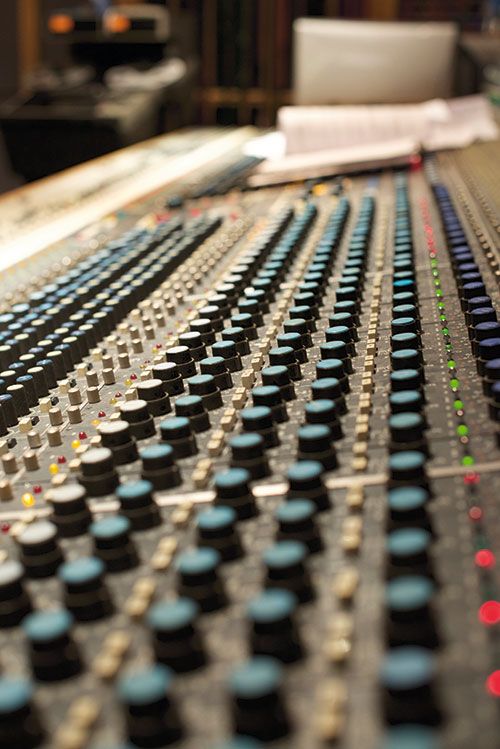 Smiles spread across the faces of both performers and recording engineers as the same four tracks flow with ease, flair, precision and swing. The closing bars decay into this huge converted church and everyone looks at each other in anticipation. After a long pause, John the cutting engineer signals that this cut is perfect and lunch has never tasted better for the artists and crew.
Smiles spread across the faces of both performers and recording engineers as the same four tracks flow with ease, flair, precision and swing. The closing bars decay into this huge converted church and everyone looks at each other in anticipation. After a long pause, John the cutting engineer signals that this cut is perfect and lunch has never tasted better for the artists and crew.
Listening back to the master tape, the brass section checks with Mike that any sounds from them putting metal mutes into their instruments or turning score pages between tracks isn’t too distracting. Mike answers with his usual infectious enthusiasm: “No, in fact it’s brilliant. It makes listeners feel like they’ve actually been invited into the recording studio”. And Mike’s right, the tiny sounds between tracks seem to perfectly convey the acoustic space and the electricity between intimate performers.
The artists and engineers return to their posts with gusto and start rehearsing side B. There’s a chat about adjusting the running order of the LP and even an insightful technical discussion about the greater tracking challenge for a stylus tip towards the end of a side of vinyl and whether the increased dynamics of any track could be more problematic. Clare says “Let’s leave ’em on a high” with Cole Porter’s Too Darn Hot and everyone nods in agreement.
Fresh lacquer is put on to the cutting lathe and once more the red light signals we’re live. Side B kicks off with superb renditions of Cole Porter’s Night And Day and Anything Goes, followed by Arlen/Mercer’s arrangement of That Old Black Magic before ending the side with a sultry version of Too Darn Hot.
Just like Side A, everyone agrees this was a great take and well recorded, but they’re itching to give it another go to see how much more they can squeeze out of themselves and the vinyl surface before the session is over. The second take is even more dynamic, with sax solos performed standing up and Clare letting rip more on key phrases. Mike says: “It’s like there’s a control knob marked ‘Smiles’ that we’ve just turned up”.
There’s a group photo of everyone elated around the freshly cut disc before they pack up their instruments to leave, knowing that was a truly great day at the office. Talking to Mike after the recording, he’s ecstatic. Checks of tapes, digital masters and the precious direct cut all look impeccable. He explains that the lacquer master will now be couriered to Germany where it will effectively be turned into a metal negative of the cut, which then in turn becomes the stamper to create the final record on audiophile-grade 180g vinyl. There will also be a CD released from the analogue master tape to compare and contrast the quality of the direct cut. Mike additionally hints that he may be encouraged to release master tapes and 24-bit/192kHz high-resolution digital files in the future too.
Mike confesses in hushed tones: “This is my dream job. Who wouldn’t want to be surrounded by such a talented team of professionals creating such a beautiful sound? The beauty of direct cut is you get to recreate so much of the magic that we heard today, in the comfort of your own listening room”.
 Listening back to the master tapes and even listening to a discarded direct cut test lacquer from rehearsals, it’s clear Mike and the team are fastidious about recording the highest quality possible. Even in mixing down to create 16-bit/44kHz files for CD, the team’s attention to detail is stupendous. Mike confirms: “Digital tools are getting better and better every day, but we like to be as unobtrusive as possible in mastering, to preserve more of the live magic we captured on the day. Human beings hear and interpret far more than can yet be explained by science. This ability to sidestep some of the issues around digital processing is what still makes vinyl so special, and for direct cut vinyl in particular to be the pinnacle of quality for listening to recorded music.” Mike continues: “I think this recording could mark a new high in our ability to capture more musical qualities. A beautifully sublime and emotional voice meets the most dynamic musicianship to create our tribute to one of the greatest singers that ever lived. I hope you and the readers will agree.” HFC will be reviewing the album in the very near future, so watch this space.
Listening back to the master tapes and even listening to a discarded direct cut test lacquer from rehearsals, it’s clear Mike and the team are fastidious about recording the highest quality possible. Even in mixing down to create 16-bit/44kHz files for CD, the team’s attention to detail is stupendous. Mike confirms: “Digital tools are getting better and better every day, but we like to be as unobtrusive as possible in mastering, to preserve more of the live magic we captured on the day. Human beings hear and interpret far more than can yet be explained by science. This ability to sidestep some of the issues around digital processing is what still makes vinyl so special, and for direct cut vinyl in particular to be the pinnacle of quality for listening to recorded music.” Mike continues: “I think this recording could mark a new high in our ability to capture more musical qualities. A beautifully sublime and emotional voice meets the most dynamic musicianship to create our tribute to one of the greatest singers that ever lived. I hope you and the readers will agree.” HFC will be reviewing the album in the very near future, so watch this space.
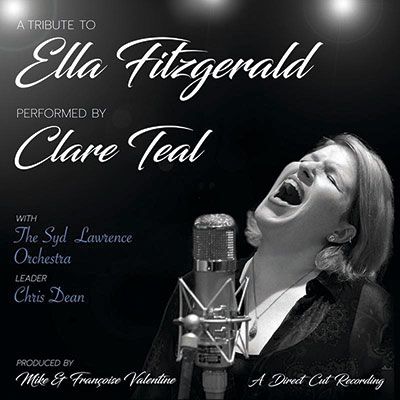 Chasing the Dragon
Chasing the Dragon
Chasing The Dragon is the specialist UK recording label run by Mike and Françoise Valentine. This tribute to Ella Fitzgerald is their third direct cut album. Previous direct cuts are Vivaldi’s Four Seasons played by the world-renowned Interpreti Veneziana chamber orchestra from Venice and The Syd Lawrence Orchestra playing tracks from Glenn Miller, Bennie Goodman and Artie Shaw on their Big Band Spectacular double album. This later is noteworthy for audiophiles as each of the two LPs has the same tracks, but one was direct cut while the other was mastered from the half-in 30in per second analogue master tapes. In this way you can compare and contrast the superb qualities of each.
Mike and Françoise are cagey about their next recording project. Holst’s Planet Suite was rumoured at one point, but that may need to wait for a wealthy benefactor to ease the cost of the 70+ musicians needed. Listening to this recording session, I feel sure the combination of highly emotional female vocals with a hugely dynamic but containable band shows off direct cut vinyl to the max. Send your record suggestions to Mike and Françoise at: [email protected] and go to chasingthedragon.co.uk to place orders.
This tribute to Ella Fitzgerald by Clare Teal and The Syd Lawrence Orchestra is available on vinyl from September and will no doubt form the centre piece of Mike’s demos at the National Audio Show on 17 and 18 September at Whittlebury Hall, where he will assemble a top-end system to show what can be achieved at the cutting edge of vinyl. Pun intended.
Clare Teal
 Clare Teal is one of the UK’s most celebrated and loved singers. With her stunning voice, encyclopaedic knowledge of jazz, swing and big band music and her innate wit, she is a sought after singer, prolific recording artist and BBC broadcaster.
Clare Teal is one of the UK’s most celebrated and loved singers. With her stunning voice, encyclopaedic knowledge of jazz, swing and big band music and her innate wit, she is a sought after singer, prolific recording artist and BBC broadcaster.
Clare has collaborated with Van Morrison, opened for Liza Minnelli at Kenwood House and the Royal Festival Hall, directed, presented and sung in two Battle of the Band Proms at The Royal Albert Hall, performed with The John Wilson Orchestra, The Hallé, The RTÉ Concert Orchestra and The Liverpool Philharmonic not to mention the BBC Big Band at Proms in the Park. She’s headlined the Bourbon Street Tent at Glastonbury Festival and performs regularly at festivals and theatres all over the country. She has recorded and released 15 albums to public and critical acclaim; seven of them on her own label MUD Records. Clare has won British Jazz Singer of the year three times, most recently in 2015. Just prior to today’s recording, she released Twelve O’Clock Tales, recorded with the famed Hallé orchestra. To support Twelve O’Clock Tales, she will be touring throughout this year.
Clare’s on a mission to bring big band and swing to music lovers everywhere and demonstrate that this genre is ever evolving and still relevant in today’s world. Talking with her it’s apparent that today’s recording is very special.
“Next year marks the 100th anniversary of Ella Fitzgerald‘s birth and we wanted to create a tribute that would do her justice. Every track could make my desert island playlist. Ella pretty much sang every standard ever written, with a repertoire spanning some six decades it wasn’t easy to pick just eight songs. The first six are I’ve Got You Under My Skin, Begin The Beguine, I Get A Kick Out of You, Night & Day, Anything Goes and Too Darn Hot. My first introduction to the first lady of song was a cassette copy of The Cole Porter Songbook. Some of the greatest tunes ever written with arrangements by Buddy Bregman, this 1956 release was a turning point in Ella’s life, it was one of the founding records in the Verve catalogue and presented Ella’s phenomenal talents not just to jazz fans but music lovers the world over.
“The other two numbers, Ding Dong The Witch Is Dead and That Old Black Magic are taken from Ella’s 1961 Harold Arlen Songbook, Billy May was the arranger. That Old Black Magic is such a great chart to sing, it feels like flying. Ding Dong The Witch Is Dead wasn’t included in the initial release, but surfaced in the eighties on subsequent CD releases it’s a nod to Ella’s wonderful sense of humour and again another fantastic piece of writing from Billy May.”
And what about recording a ‘direct cut’ Clare?
“Ahead of the recording, I’ll be honest, I was terrified, but at the same time very excited. All my heroes, Ella Fitzgerald, Peggy Lee, Billie Holiday, Louis Armstrong and Frank Sinatra would have at one point stood in front of a beautiful old valve microphone with a band behind them recording direct to disc, but usually one song at a time. We on the other hand were making a whole album recording each side in one continuous take, track after track with no safety net or stop button!
“Any sudden squeaks or squawks could have been embarrassing, but I think kicking the mic stand on the final note would have been my worst nightmare. I’m delighted with what I’ve heard so far in playback and can’t wait to spin the final disc. All I need now is a new turntable to do it justice.” CW
 |
Inside this month's issue:
Q Acoustics 3020c standmount loudspeakers, Perlisten R10s active subwoofer, Quad 33 and 303 pre/power amps, Acoustic Solid Vintage Full Exclusive turntable, newcomer Fell Audio Fell Amp and Fell Disc and lots, lots more...
|





































